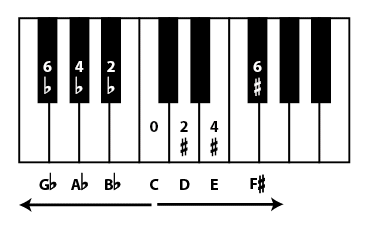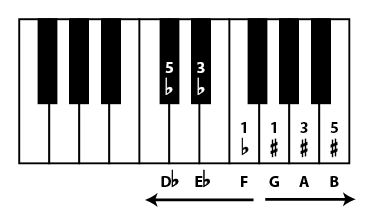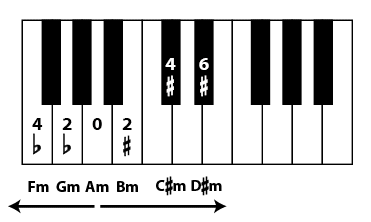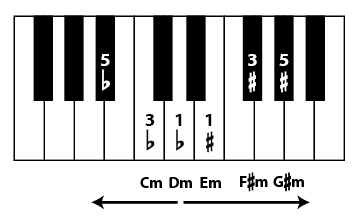 For musicians it is important to know how many sharps or flats belong to the different key signatures. A lot of musicians use mnemonics to determine the number of sharps or flats. For the sharps there is ‘Gorillas Don’t All Eat Bananas From Choice’ and for the flats there is ‘Foreign Bananas Eat All Dat Gorillas Can’t’. The drawback of the use mnemonics is that it doesn’t provide real knowledge. It’s just a trick; you don’t get deeper understanding of the material.
For musicians it is important to know how many sharps or flats belong to the different key signatures. A lot of musicians use mnemonics to determine the number of sharps or flats. For the sharps there is ‘Gorillas Don’t All Eat Bananas From Choice’ and for the flats there is ‘Foreign Bananas Eat All Dat Gorillas Can’t’. The drawback of the use mnemonics is that it doesn’t provide real knowledge. It’s just a trick; you don’t get deeper understanding of the material.
A much better way is to derive keys from other keys. C-major has zero sharps. Each time you go up a whole tone, two sharps are added. D-major has two sharps, E-major has four, F#
-major has six, and so on. Going down works the other way around. Each time you go down a whole tone, two flats are added. B@
-major has two flats, A@
-major has four flats, G@
-major has six flats, and so on. You can see the relationship of the keys in the following scheme:

In the same manner, it is possible to determine the remaining keys, starting from G or F. G-major has one sharp, A-major has three sharps and B-major has five sharps. F-major has one flat, E@
-major has three flats and D@
-major has five:

Minor
Minor keys may be derived from the parallel major keys, like D-major and B-minor have the same number of sharps. But you might derive the minor keys from other minor keys as well, in the same way as described above. When you go up a major second two sharps are added, and when you go down two flats. The minor keys with an even number of sharps or flats may be derived from A-minor:

The minor keys with an uneven number of sharps or flats may be derived from D-minor or E-minor:
